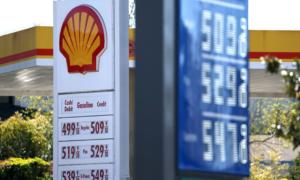State regulations currently limit blends to no more than 10 percent ethanol, known as E10, but regulators are considering allowing up to 15 percent, known as E15.
“Given the potential for allowing E15 gasoline to increase fuel supply and reduce gasoline prices, with little to no environmental harm, it is prudent for [the air resources board] to prioritize resources that would allow for the expeditious completion of this process,” Newsom said in his order. “Therefore, I am directing [the board] to accelerate its action on this critical issue.”
The U.S. Environmental Protection Agency approved E15 in 2011 for light-duty vehicles built since 2001. California is currently the only state that does not allow E15 for sale or use.
Permitting the higher-ethanol blend could reduce prices at the pump, according to the governor.
“Even with limited data, we find that consumers have the potential to gain significantly from the introduction and purchase of E15,” the study reads.
The study concluded that lower production costs, greater availability, and higher levels of competition are expected to drive savings to consumers of up to $2.7 billion annually.
A study sponsor said that California households could save about $200 per year.
Researchers noted that challenges exist, however, as infrastructure modifications would be needed to accommodate the new fuel.
“Decisions by branded and unbranded gas stations on whether to add separate E15 nozzles or replace existing E10 nozzles, along with adjustments in pricing strategies, will be critical for successful implementation,” the authors wrote.
While approximately 24 million light-duty vehicles are approved to run on the increased ethanol blend, experts say other engines—including lawn equipment, generators, and two-stroke engines, among others—could be damaged by E15.
Energy Studies
Studies from the U.S. Department of Energy also found complications with using higher levels of ethanol in certain engines.The fuel causes some engines to run lean, whereas too much air to fuel causes complications ranging from knocking to stalling, researchers found.
According to the authors, the effects on operation, quality, driveability, and other issues needed further evaluation.
A four-stroke supercharged engine failed an endurance test when three exhaust valves were damaged after metal temperatures rose and created fatigue cracks, and pistons showed signs of higher operating temperatures, according to the study.
A smaller two-stroke engine also raised concern after it was observed running lean and then blowing a rod before the durability test could be concluded.
Researchers noted that more study is needed to determine whether higher ethanol blends are affecting lubrication and oil dispersion in applications in which oil and fuel are blended for two-stroke machines.
In addition, exhaust emissions were brought into question by the study, as some engines’ nitrous oxide outputs exceeded state guidelines.
Elevated exhaust temperatures were observed, and the researchers said they found no evidence to support approving E15 for snowmobile use.
“Increased exhaust temperatures are of concern to manufacturers because some parts in the engine and exhaust could be temperature sensitive,” the study said.
Research and Analyses
Other research from the University of Michigan Energy Institute published in the Climatic Change journal in 2016 questions the carbon-based argument for biofuels such as ethanol and says their impact on greenhouse gases (GHG) is “uncertain.”“Biofuel use fell well short of being carbon neutral even before considering process emissions,” the authors wrote. “When this estimate of the real-world offset is considered together with values from the literature for displacement effects, the conclusion is that rising U.S. biofuel use has been associated with a net increase rather than a net decrease in CO2 emissions.”
Some analyses of the state’s carbon reduction agenda suggest that the actions of one state are frivolous when some other states and nations are increasing their carbon emissions.
He said the state needs to come to terms with its goals and the impact the regulations have on the price of fuel and prioritize either low gas prices or low carbon levels.
“The trick is, such mechanisms need to try to simultaneously offset the cost impacts while also discouraging the use of higher carbon fuels,” Bushnell wrote. “Ultimately, if we want Californians to stop using gasoline, we are going to have to make it more expensive than the alternatives. There are also legitimate concerns about the effects of our climate policies on energy costs, which disproportionately fall upon lower-income Californians.”
One state lawmaker said the state’s policies are to blame for higher fuel costs, with Californians paying about $1.50 more per gallon as of late October, according to automobile club AAA.
“The reality of our gasoline situation is that the policy of this state is to eliminate fossil fuel use, to get rid of gasoline,” state Sen. Roger Niello told The Epoch Times on Oct. 28.
“The fault for the higher prices is state taxes and regulations.”







